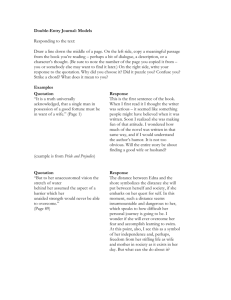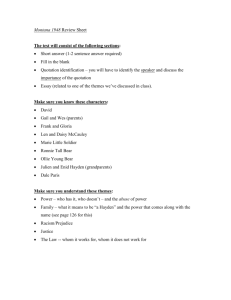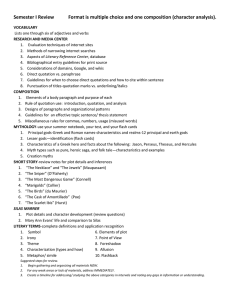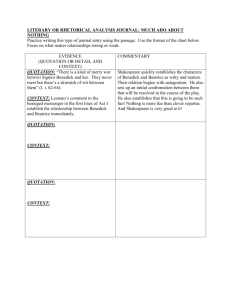Maus Essay Graphic Organizer #3: Putting It All Together Prompt
advertisement
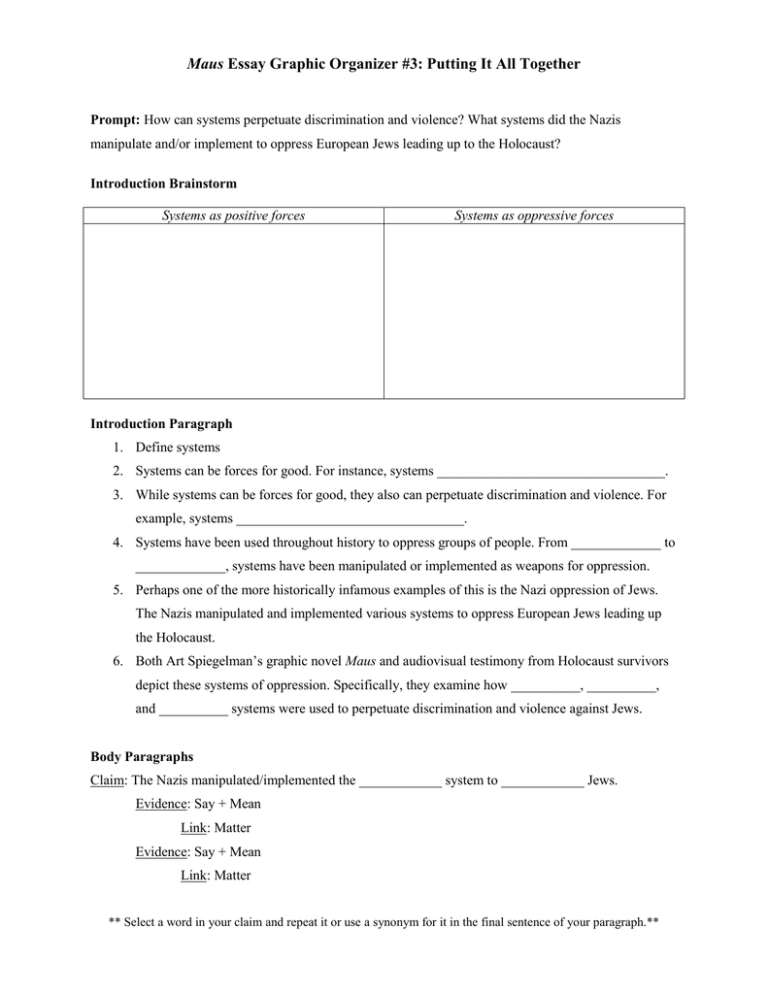
Maus Essay Graphic Organizer #3: Putting It All Together Prompt: How can systems perpetuate discrimination and violence? What systems did the Nazis manipulate and/or implement to oppress European Jews leading up to the Holocaust? Introduction Brainstorm Systems as positive forces Systems as oppressive forces Introduction Paragraph 1. Define systems 2. Systems can be forces for good. For instance, systems _________________________________. 3. While systems can be forces for good, they also can perpetuate discrimination and violence. For example, systems _________________________________. 4. Systems have been used throughout history to oppress groups of people. From _____________ to _____________, systems have been manipulated or implemented as weapons for oppression. 5. Perhaps one of the more historically infamous examples of this is the Nazi oppression of Jews. The Nazis manipulated and implemented various systems to oppress European Jews leading up the Holocaust. 6. Both Art Spiegelman’s graphic novel Maus and audiovisual testimony from Holocaust survivors depict these systems of oppression. Specifically, they examine how __________, __________, and __________ systems were used to perpetuate discrimination and violence against Jews. Body Paragraphs Claim: The Nazis manipulated/implemented the ____________ system to ____________ Jews. Evidence: Say + Mean Link: Matter Evidence: Say + Mean Link: Matter ** Select a word in your claim and repeat it or use a synonym for it in the final sentence of your paragraph.** In-text Citations Maus: Quote lead + “Quotation” (Spiegelman page #) o Examples of quote leads: In panel x, Vladek says to Art, “Quotation” Vladek explains, “Quotation” in panels x and x. Art asserts in panel x, “Quotation” Survivor Testimony: Quote lead + “Quotation” (Last name of survivor) o In his testimony about life in the ghettos, [First and Last Name] asserts, “Quotation” o As she explains the new Nazi economic systems, [First and Last Name] says, “Quotation” o [First and Last Name] describes her personal experience with x, she explains, “Quotation” Adding or omitting words in quotations If you add a word or words in a quotation, you should put brackets around the words to indicate that they are not part of the original text. o Jan Harold Brunvand, in an essay on urban legends, states, "some individuals [who retell urban legends] make a point of learning every rumor or tale" (78). If you omit a word or words from a quotation, you should indicate the deleted word or words by using ellipsis marks, which are three periods ( . . . ) preceded and followed by a space. For example: o In an essay on urban legends, Jan Harold Brunvand notes that "some individuals make a point of learning every recent rumor or tale . . . and in a short time a lively exchange of details occurs" (78). Conclusion 1. Summarize your main arguments. 2. Why should we care about systems having the ability to become oppressive forces? What can we learn from the Holocaust? Do we have systems of oppression in modern society? If so, what systems? Works Cited


